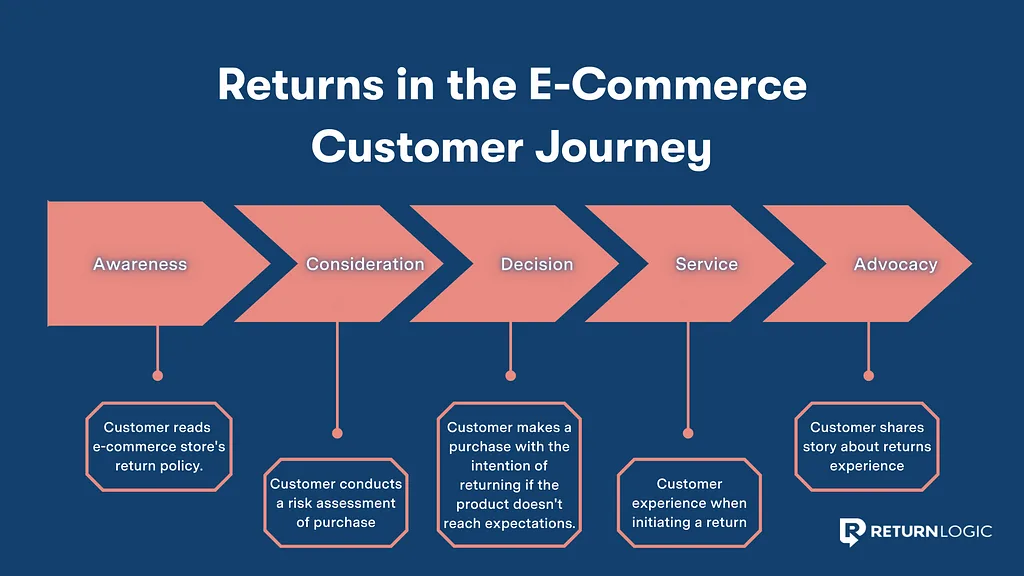Coffee & Commerce: Optimizing CLV in the Post-Purchase Experience with Whiplash’s Marco De Paulis

This past Tuesday, February 8th, we chatted with Whiplash’s Marco De Paulis, for our second episode of Coffee & Commerce.
Coffee & Commerce is a series of fireside chats hosted by the ReturnLogic team to connect e-commerce storeowners together through casual discussions on LinkedIn Live. Guests include some of the best and brightest in the business—talking about what works, what doesn’t, and what’s new in ecommerce.
This week, we discussed how to improve the Customer Lifetime Value (CLV) at every step of the e-commerce customer journey with the Director of Partnerships at Whiplash, a third-party logistics company (3PL) that fulfills orders and packages for hundreds of brands.

Marco started his journey in the digital e-commerce space in 2015 when he worked for a design agency and eventually moved to a development agency. Soon, Marco found himself working for a Shopify Plus agency where he was able to partner directly with brands to consult them on different technology platforms for e-commerce retail management.
Marco’s experience with different parts of the e-commerce customer journey left him well equipped to understand the digital marketing efforts from the top of the customer journey funnel all the way to the post-purchase experience.
In our conversation with Marco on Tuesday, we discussed how the rise of e-commerce retail has changed how consumers shop, forcing retailers to be more intentional about every step of their customers’ journey.
Marketing, customer acquisition and retention strategies are changing and will never be the same again thanks to online shopping.
“I know that it’s been talked about a lot because everyone’s been freaking out…about the upcoming changes…” says Marco, “Now that they’re here, how our brands react and respond in getting creative to the rising cost of the actual acquisition of customers, the rising costs of advertising, and overall, how that affects profitability… we’re seeing a lot of testing of new channels.”
BRIDGING THE GAP BETWEEN E-COMMERCE AND RETAIL
Marco compared the rise of online retail to the rise of streaming services that we witnessed over the last couple decades.
“Streaming kind of broke away from cable and came back around and almost became a whole cable thing again where you have like 10 different streaming platforms. We’re kinda back there with e-commerce where now the brands that have been super anti-retail, they need more exposure… For me, that means different partnerships with products that can kind of bridge that gap from e-commerce retail.”
This means modern ecommerce brands are now looking to establish physical brick and mortar footprints by securing space on shelves in familiar retail settings, such as Macy’s or Target.
Marco explained how the rise in fulfillment options help brands get big cash injections.
Growing in the market depends on how brands leverage all of this based on their Omni retail strategy and presence.
On the flip side, large retailers like Bloomingdales or Nordstrom are providing opportunities to work with ecommerce brands. With department stores becoming less popular, these major retailers are looking to pivot, reformatting their store layouts to accommodate and take advantage of the draw of e-commerce brands.
“I think it’s good that it’s harder from a marketing perspective… in certain areas because brands can’t be complacent. They can’t just use the same old playbook. They have to really try new things, test new things, focus more on their brands, focus more on retention, the further down aspects of the funnel rather than the hacks at the top of the funnel.”
In other words, every step of the customer journey, across every customer channel requires deeper intention than before. This forces brands to focus more on the steps of the customer journey that occur after the original purchase rather than focusing all their attention on acquiring new customers.
In the modern world, that customer journey is more personalized to each customer than it ever was before.

FOCUSING ON THE POST-PURCHASE E-COMMERCE CUSTOMER JOURNEY
We asked Marco what the key points in the new customer journey are to drive a repeat purchase.
Marco mentioned that brands need to focus more on the point of conversion and the post-purchase experience.
Today, there are more solutions surrounding retention and repeat purchases than ever before. Through apps, consulting, and thought leadership, brands that can leverage these solutions build more trust with their customers.
It’s all about maximizing the moment a customer makes a purchase, building on the momentum of their excitement for the brand, and using it as an opportunity to continue engagement.
Through the post-purchase journey, you build brand advocates through technology that enables communication efficiency, solves problems quickly, and creates customer retention and loyalty.
Rather than focusing on constantly getting new customers, the focus is on turning new customers into loyal ones. The most profitable aspect of driving sales and revenue lies in driving repeat purchases. Therefore, customer retention strategies in the post-purchase experience are where the most opportunity lies in the funnel for brands.
So, what could brands do if they’re having trouble with their post-purchase strategy? Well, Marco mentioned several approaches that can be taken.
- Visibility: Allow customers to track their orders
- Communication: Set up email or SMS flows to continue engagement with customers while they’re waiting for their purchase to arrive
- Returns: Focus on retaining revenue, driving another purchase, or keeping products in the hands of customers at the point of return a flexible return policy that offers multiple return types.
- Subscriptions: Allow customers to subscribe for repeat purchases
- Stay in touch: Cross-sell and upsell through reviews, product recommendations, etc.
“ …there’s quite a bit, but I think there’s a few key areas…where you can start to focus. And then there’s always more bells and whistles you can utilize for all these different tools and platforms.”
BUILDING AND OPTIMIZING AN EFFICIENT TECH STACK
With a million ‘bells and whistles’ available for e-commerce merchants to improve their customer experience, we asked Marco what he thinks is essential for building a scalable tech stack. He said the best way to think of it is in terms of the funnel.
Starting at the top, having email and SMS management software is essential to driving the first purchase and getting into repeat purchases.
As a merchant grows, customer service becomes a critical component. Therefore, investing in a helpdesk like Gorgias saves e-commerce retailers from unorganized communication with customers.
Lastly, having an efficient and scalable returns management system in place is crucial for ensuring a positive post-purchase experience.
“I think for a long time people tried to push returns off and make it hard to return things,” says Marco, “… returns aren’t bad but it’s a key opportunity. It’s another touchpoint in that journey to build a good relationship… get them to be happy and confident to make other purchases even if something may not fit right or whatnot.”
ADVICE FOR OTHER E-COMMERCE MERCHANTS
We closed off our chat with Marco by asking him what advice he has for other e-commerce merchants, and he had a couple things to share:
You can never really stop optimizing your funnel.
“Whether it’s testing new solutions or just improving what you have, something that I saw way too often when we were at the Shopify Plus agency was that you have so many ecomm tech solutions, but you’re not really using them to the fullest and so people pay a lot of money for different apps. They end up (only) using 10, 20 or 30 percent of the features. And so really maximize what you have at your disposal because there’s a lot that you can eek out of those different solutions.”
Focus on the brand and building a really strong connection with consumers.
“The brands who are going to outlast these changes and survive are the ones who have a really clear mission and really clear values and purpose for why they’re here that built a really strong connection with consumers that gets them coming back and staying with you, and being super loyal and marketing for you.”
Marco’s insight on improving customer lifetime value through the e-commerce customer journey truly enlightened us on where brands should reprioritize their focus.
There is just so much more to learn from Marco about the e-commerce market. Although our chat was short, we hope to have him back again to dive deeper into how merchants can maximize their opportunities in the post-purchase experience.
Until then, be sure to watch the full episode of Coffee & Commerce featuring Marco De Paulis from Whiplash down below.





